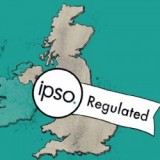 The press watchdog has dismissed a radiographer’s claim that a regional daily breached her privacy by reporting on publicly available documents about her.
The press watchdog has dismissed a radiographer’s claim that a regional daily breached her privacy by reporting on publicly available documents about her.
The Independent Press Standards Organisation has thrown out her complaint against the Birmingham Mail after it covered the findings of a Health and Care Professions Council disciplinary panel against her.
The radiographer, who was unnamed by IPSO in its ruling on the case, insisted the findings constituted private information on the ground that no one would have read the notes without having prior knowledge of the case.
However, IPSO backed the Mail after ruling the information found in its story had been publicly accessible on the HCPC website and so was in the public domain.
In a story headlined ‘Radiographer incorrectly exposed child to 50 times more radiation during x-ray scan at Walsall hospital’, the Mail had reported claims made at the disciplinary panel that the radiographer had been ‘rushing’ during the course of the procedure.
Complaining under Clause 1 (Accuracy), Clause 2 (Privacy), and Clause 14 (Confidential sources) of the Editors’ Code of Practice, the radiographer said the publicly-accessble documents had been removed from the HCPC website while the Mail’s story had remained online.
She also said she had administered 20 times the amount of radiation, rather than 50 times the amount of radiation.
Denying any breach of Code, the Mail provided IPSO with a copy of documents provided by the HCPTS that stated: “The patient received radiation approximately 50 times greater than the expected exposure. Moreover, the Panel notes that, in relation to Patient A the dose was 50 times greater than required and accordingly had to be reported to the CQC thereby causing reputational damage to the Trust.”
The newspaper added that the tribunal documents had been publicly available, but were later removed after the suspension expired.
IPSO accepted the headline did not, in isolation, make clear what was meant by “50 times more radiation”, but that the opening sentence of the story clarified that it was 50 times more radiation than “was needed”.
While the case notes had been taken down after the radiographer’s suspension had ended, the Committee found this did not negate the fact that it had been in the public domain before this.
In addition, the information contained within the story related to her professional career, rather than her personal life. There was, therefore, no reasonable expectation of privacy over this information.
The complaint was not upheld, and the full adjudication can be read here.





 Follow HTFP on Twitter
Follow HTFP on Twitter